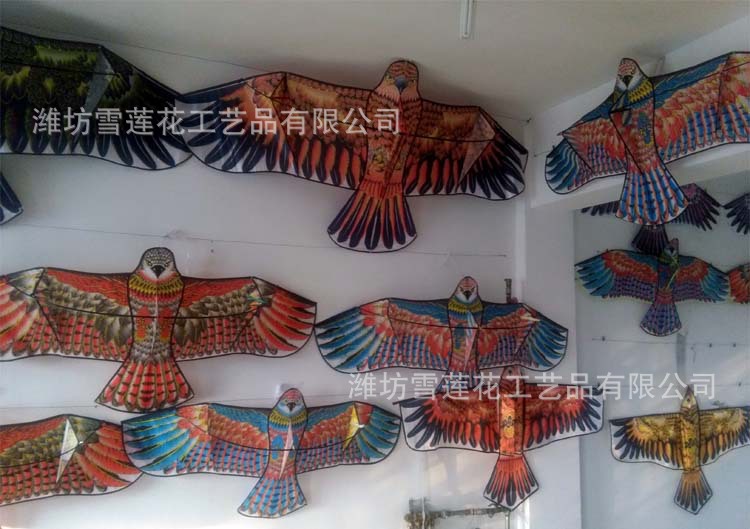X Email Mobile
|
|
¥1.82 | 972593 piece available |
|
|
|
¥1.82 | 979094 piece available |
|
| blank triangle +30 m small line | ¥2.31 | 997694 piece available |
|
| blank fish-shaped +30 m small line | ¥2.31 | 99999 piece available |
|
|
|
¥2.31 | 907324 piece available |
|
|
|
¥2.92 | 996757 piece available |
|
|
|
¥2.92 | 995069 piece available |
|
| graffiti color stripes kite only | ¥2.19 | 999999 piece available |
|
| graffiti color stripes kite +30 m small line | ¥2.43 | 997299 piece available |
|
| graffiti color stripes kite +30 m small line +6 color paint a pen | ¥3.28 | 999819 piece available |
|
| no refund or exchange period for customized products 30 days | ¥3.65 | 999969 piece available |
|
| six-color paint pen | ¥0.85 | 83499 piece available |
|
| handle order tail cargo 1.4 m graffiti kite | ¥3.04 | 0 piece available |
Out of Stock
|
|
|
¥15.8 | 0 piece available |
Out of Stock
|
| graffiti canvas 0.6*10 m | ¥31.59 | 0 piece available |
Out of Stock
|
| graffiti canvas 0.9*5 m | ¥24.3 | 0 piece available |
Out of Stock
|
| graffiti canvas 0.9*10 m | ¥48.6 | 0 piece available |
Out of Stock
|
A new item has been added to your Shopping Cart. You now have items in your Shopping Cart.
haisheng 7yr.
Main Products:neiyi
Contacts:yukuaikuaiChat
Mobile:86-19198377156
WhatsApp:19198377077
WeChat:19198377156
Address:Yiwu City,Jinhua City City,Zhejiang Province
Related items
Kite PackagingPlastic bags.
Kite Production AreaShandong Weifang
Kite FeaturesBreeze is easy to fly
Suitable for peopleFor children aged 3 and above, this product features innovative patterns that are current and popular among children, making it a favorite among young ones!















Wholesale instructions:
Kites do not come with wheel! Kites and wheels are sold separately! You can mix and match if you order 200 yuan or 20 pieces of products! Due to the large volume of goods, if there is no stock after you make the order, the customer service will contact you or match the same price or the same style with different patterns that sell well! The size of the kite may have a small error, which is within the normal range and will not be used as a condition for return or exchange! If the goods are returned or directly rejected due to the buyer's own reasons; or if it is due to the buyer's own reasons; 30% of the purchase price will be deducted as compensation! Those who place an order, indicate that they have read and accept this regulation! We do not accept returns and refunds in this aspect!
Kite Flying Safety Tips:
1. Do not place it near high-voltage power lines or electric poles.
2. Pay attention to climate change. If there are typhoons or lightning, immediately stop the release and stay away from open spaces.
3. Choose a kite that is suitable and can match the wind speed, and do not underestimate the power of strong wind.
4. The person who is releasing the balloon should choose an open area, such as a park or beach, to avoid obstacles.
Kites were invented by the Chinese. It is said that Mozi made a wooden bird after three years of research, which is one of the earliest origins of kites. Later, his student Lu Ban improved the material of Mozi's kites by using bamboo, and this evolution led to the development of the multi-string kites we have today.
The kite originates from the Spring and Autumn period, with a history of over 2000 years. It is said that "Mozi made a wooden kite, which took three years to complete, but only flew for one day before it broke." During the Northern and Southern Dynasties, kites began to be used as tools for transmitting information. From the Sui and Tang dynasties, with the development of the papermaking industry, people began to use paper to cover kites. By the Song dynasty, kite flying had become a favorite outdoor activity among the people. Zhu Ming's "Wulin You Shi" wrote: "During the Qingming Festival, people go to the countryside to fly kites and don't return until dusk." The word "kite" refers to a kite. In the "Qingming Shanghe Tu" by Zhang Zeduan of the Northern Song Dynasty and in "Bai Zi Tu" by Su Han, there are vivid scenes of people flying kites.
Today, our country's kite-flying activities play an important role in international cultural exchanges, strengthening friendship with people from all over the world, and in the development of the economy and tourism.
Common kite fault adjustment methods
1. Kites do somersaults in the air.
The method of adjustment is to appropriately increase the weight at the tail of the kite (the tail), causing its center of gravity to shift downward. Alternatively, one can slightly move the string upward. However, no matter which method of adjustment is used, it should not be done too much at once. Instead, it should be adjusted while testing, judging the effect and degree of adjustment based on the changes in the flying state.
The kite flies with an inclination: "
Check if the two halves of the kite are symmetrical and if the lengths and positions of the two sides of the skeleton are consistent. Adjust the total lead line (the total pull point of several lead lines) to move it towards the lower side when the kite leans. The amount of movement should be determined through experimentation. If the kite sways from side to side: The general method of adjusting the sway is to slightly move the total lead line downward. You should move it while testing and stop when it's sufficient. Also, appropriately reducing the tail of the kite can help improve the swaying phenomenon.
3. Kites don't eat the wind.
One type of kite is that as soon as the line is tightened, the kite will bow forward, and the line will become loose. During the falling process, the kite will naturally raise its head, and as soon as the line is pulled again, the phenomenon of bow down will occur. The other phenomenon is that as soon as the kite bows forward, it will bow to the bottom, and it cannot raise its head by itself. The reason for the first situation is purely that the line is too high, and it can be solved by slightly moving the line down. The reason for the second situation, in addition to design issues, is mainly that the center of gravity is too forward. It can be appropriate to add weight to the tail (tail), but at the same time, it is also necessary to move the line down.
4. Kites fly far but not high:
The method of adjustment is to move the tether up; if it is a kite with multiple tether lines, one should tighten the upper tether and let the lower tether out. If the kite is too heavy, it is also easy not to fly high. Lightening the weight at the tail is another method.
|

|
Before flying a kite, you need to know the direction and strength of the wind. If there are flags or smoke, you can tell the direction of the wind by observing the direction it floats. Otherwise, pick up dry grass or some small pieces of paper and throw them into the air to determine the correct direction of the wind.
When the wind is strong enough, flying a kite does not need to ask for help. You can hold the kite's string and run against the wind, watching the kite's flight. You should also pay attention to the kite's ascent until you feel that the wind is strong enough and the kite is climbing upward. Then, you can stop and slowly let out the string.
When the wind strength is insufficient, quickly retract the line quickly to add artificial wind; if you feel that the kite line has tension, you should grasp the opportunity to extend the line; if the kite shows a downward trend, it is sometimes necessary to quickly retract part of the kite line until the kite can hold its position in the sky without falling.
When flying a kite, it's best to have an assistant to help. The assistant should stretch the kite string about 10 meters, facing into the wind, and lightly hold the skeleton at the back of the kite with their thumb and forefinger. (It is easier to detach) Hold it still, and when the gust of wind arrives, the kite should be lightly pulled to detach from the assistant's hand (without asking the assistant to let go). As the kite rises to a certain height, the kite should be lightly shaken front and back to stabilize it.
There are many times when the operator will tell the assistant to let go, but the assistant still holds on to the kite or throws it up; sometimes the operator runs forward regardless of the front and back, which are all incorrect methods of releasing.
If you want to fly several kites at the same time, you must consider the way of connecting the kites to the lines.
If the kite flies stably, you can tie it to a tree trunk or object and let it float. However, when the wind direction and strength are unstable, you must control it at hand. If the wind suddenly becomes stronger and the kite sways too much, there is a risk of it toppling over. In this case, there are two control methods: one is to quickly let out the line; the other is to quickly run forward a few steps towards the kite to ease its momentum. Sometimes, when the wind pauses and the kite falls, you can gently shake it a few times or quickly run backward; if there is no way to retreat, you can handle it by quickly reeling in the line.
If two kites get tangled in their lines, the operator should not panic. Instead, they should approach the other operator and exchange the lines to adjust them, allowing the tangled lines to loosen.
 |
|
We ship goods on a regular schedule every day. If the shipment is delayed, it will be sent the next day. If you have any special requirements, please contact our customer service immediately to negotiate a solution. Please have the goods signed for in front of the courier when you receive them. If there are any missing or damage, please contact us immediately so that we can resolve the issue. Our store defaults to using Ten Days Express. For areas where Ten Days Express does not reach or if you need other courier services, please contact our customer service to confirm the shipping fee.  |
 |
|
The following circumstances do not provide a return or exchange service:  |
 |
|
|
We suggest contacting us via our customer service chat, as the volume of daily inquiries is quite high, leading to frequent overloads of our customer service chat, which may not allow for timely responses. If this causes any inconvenience, please understand and forgive us!
|
| First weight freight | The city to which the shipment has arrived | Estimated Arrival | Additional weight charge |
| 7 yuan | Shandong | 1-2 days | 1 yuan |
| 7 yuan | Jiangsu, Zhejiang, Shanghai, Anhui, Henan, Beijing, Tianjin | 2-4 days | 2 yuan |
| 7 yuan | Guangdong, Jiangxi, Hunan, Hubei, Hebei, Shaanxi | 3-5 days | 3 yuan |
| 7 yuan | Guangxi | 3-5 days | 5 yuan |
| 8 yuan | Liaoning, Jilin, Heilongjiang, Chongqing, Sichuan | 3-5 days | 5 yuan |
| 8 yuan | Guizhou, Yunnan, Inner Mongolia, Hainan | 4-7 days | 7 yuan |
| 10 yuan | Qinghai, Gansu, Ningxia | 5-8 days | 10 yuan |
| 18 yuan | Tibet, Xinjiang | 5-8 days | 15 yuan |
| 35 yuan | Hong Kong, Macau, and Taiwan (generally send by SF Express) | 4-7 days | 20 yuan |
|
Reminder: Shipping fees are charged based on actual occurrence, and you can also consult the customer service for details. |
|||
Update time:
TOP